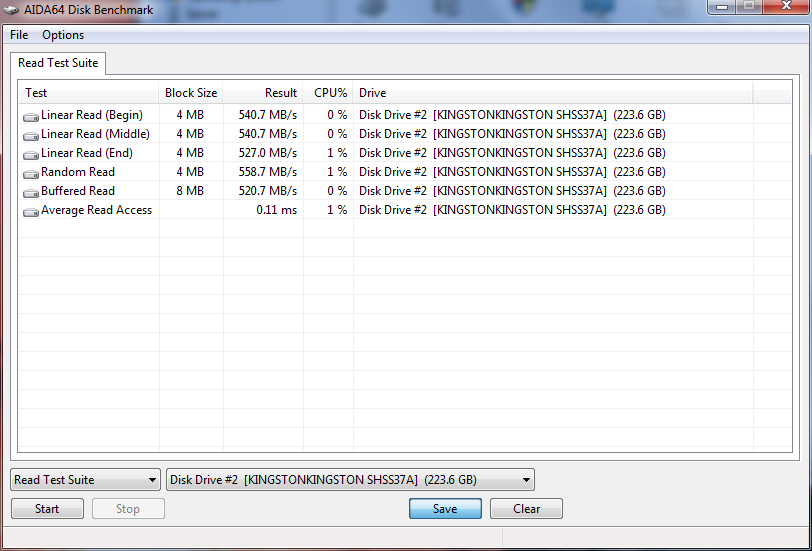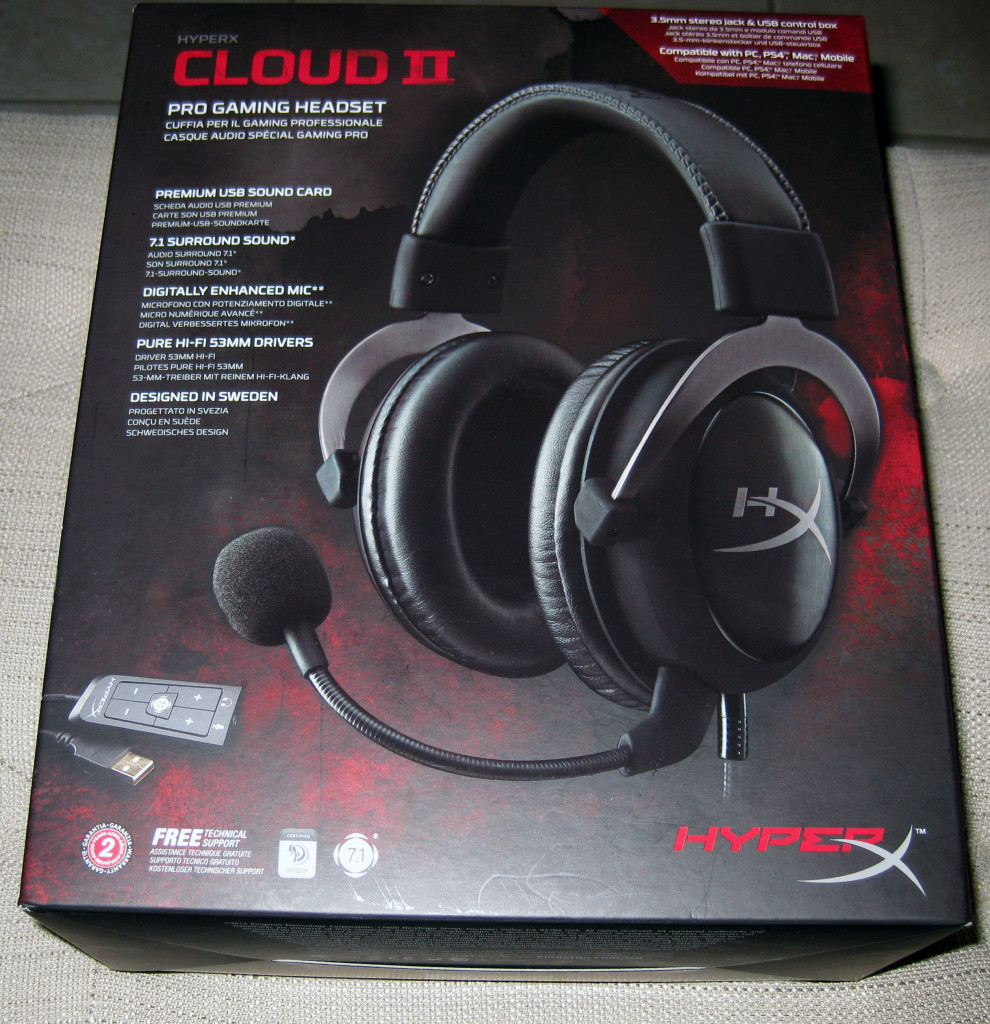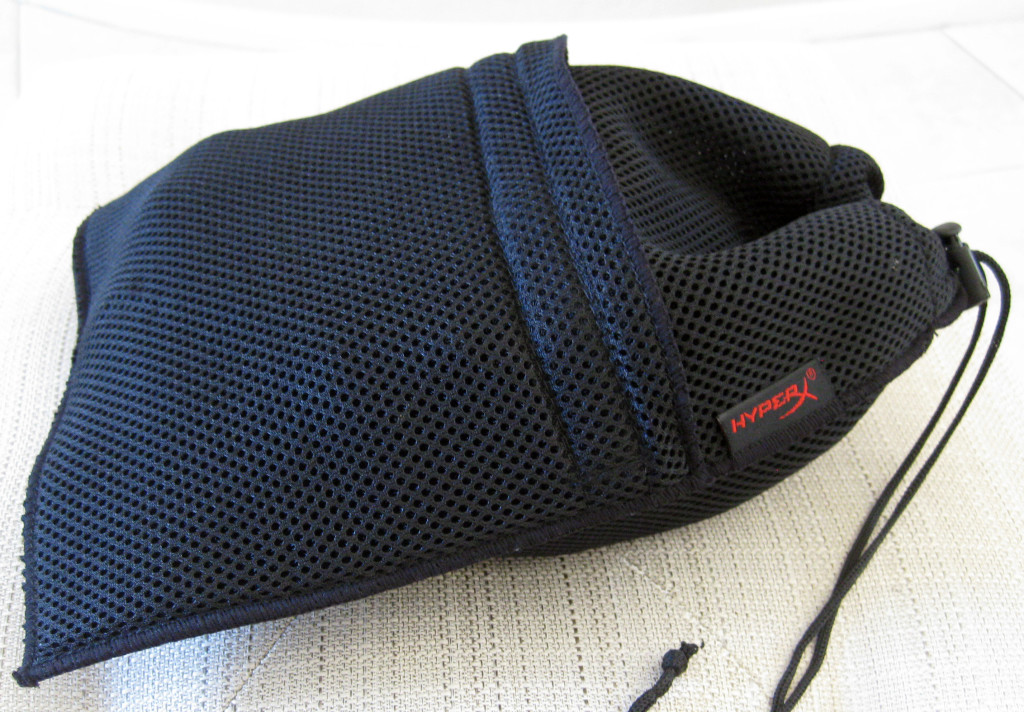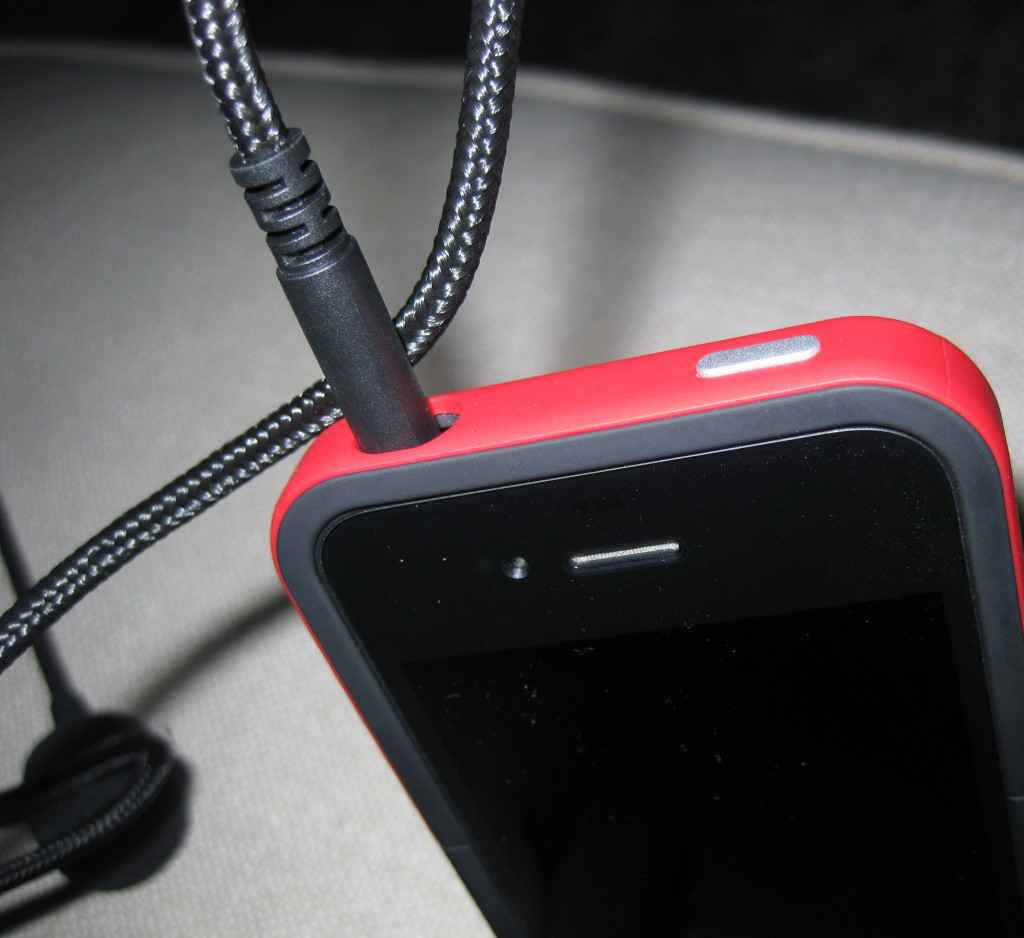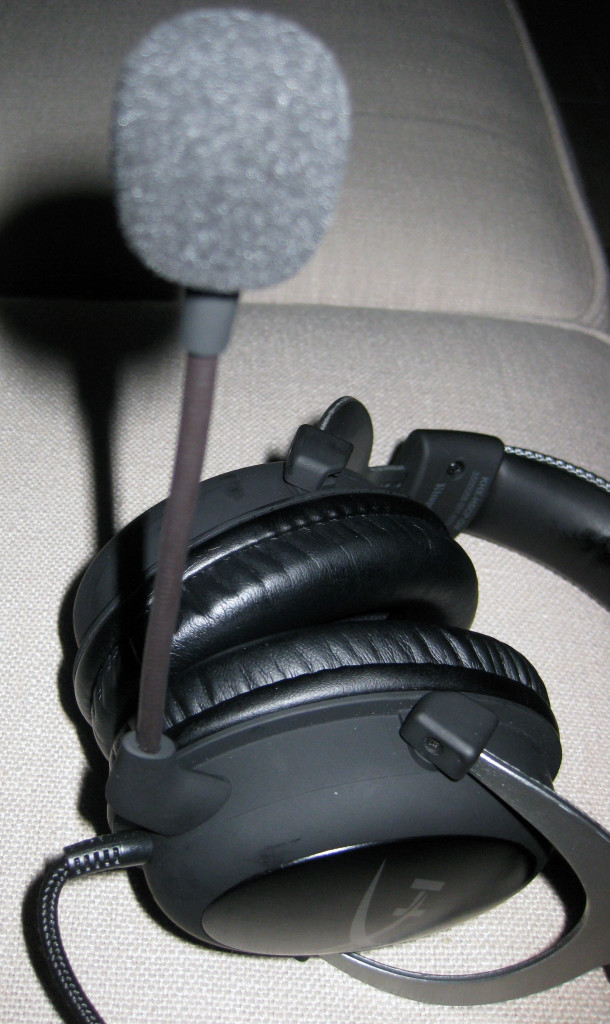hyperx
Review: Kingston HyperX Savage SSD
Solid State Drives (SSDs) have recently become a vital component of most new PC builds. They provide speeds that traditional spinning hard drives can only dream of, and have already reached the limits of what the SATA3 (SATA 6Gb/s) specification is capable of handling.
Despite these improvements, innovation is still occurring within the world of SATA3-based SSDs, even as PCIe-based SSDs have begun to gain more traction.
The latest controller to hit the market is the Phison PS3110-S10, which is a quad core, eight channel, twelve syllable (including the hyphen) controller.
This Phison controller is utilized in Kingston’s latest SSD, the HyperX Savage SSD, which is the fastest SATA-based SSD they produce. The new Savage SSD is replacing the well-regarded HyperX 3K drive.
Kingston sent Not Operator the 240GB version of the HyperX Savage SSD. While I didn’t expect much other than the drive, the SSD package actually came with a few extra items.
Technically, the package we were sent is referred to as the “HyperX Savage SSD Upgrade Bundle Kit”. The 240GB kit is model SHSS3B7A/240G and includes the following items:
- HyperX Savage SSD (in this case 240GB)
- USB 3.0 Enclosure
- 5” Bracket and Mounting Screws
- SATA3 Data Cable
- Multi-bit Screwdriver
- 7mm to 9.5mm Adapter
- Acronis Data Migration Software
The inclusion of these items is definitely appreciated, as purchasing all of them separately would end up costing a fair bit. Individually, the 2.5” USB 3.0 enclosure would cost around $20, the SATA3 cable would probably be something like $4, the screwdriver would be at least $4, and the Acronis True Image software goes for $40.
In total, those items alone would end up costing a minimum of $68. I’ll come back to this figure in the value portion located in the conclusion below.
Specifications
The specifications for the Kingston HyperX Savage SSD are below:
- Form factor: 5"
- Interface: SATA Rev. 3.0 (6Gb/s) – with backwards compatibility to SATA Rev. 2.0 (3Gb/s)
- Capacities: 120GB, 240GB, 480GB, 960GB
- Controller: Phison PS3110-S10
- Baseline Performance
- Compressible Data Transfer (ATTO):
- 120GB — 560MB/s Read and 360MB/s Write
- 240GB, 480GB, 960GB — 560MB/s Read and 530MB/s Write
- Incompressible Data Transfer (AS-SSD and CrystalDiskMark):
- 120GB — 520MB/s Read and 350MB/s Write
- 240GB — 520MB/s Read and 510MB/s Write
- 480GB — 520MB/s Read and 500MB/s Write
- 960GB — 520MB/s Read and 490MB/s Write
- IOMETER Maximum Random 4k Read/Write
- 120GB — up to 100,000/ up to 84,000 IOPS
- 240GB — up to 100,000/ up to 89,000 IOPS
- 480GB — up to 100,000/ up to 88,000 IOPS
- 960GB — up to 99,000/ up to 89,000 IOPS
- Random 4k Read/Write:
- 120GB — up to 93,000/ up to 83,000 IOPS
- 240GB — up to 93,000/ up to 89,000 IOPS
- 480GB — up to 92,000/ up to 89,000 IOPS
- 960GB — up to 97,000/ up to 89,000 IOPS
- PCMARK® Vantage HDD Suite Score:
- 120GB, 240GB, 480GB, 960GB — 84,000
- PCMARK® 8 Storage Bandwidth:
- 120GB, 240GB, 480GB — 223MB/s, 960GB — 260MB/s
- PCMARK® 8 Storage Score:
- 120GB, 240GB, 480GB — 4,940, 960GB — 4,970
- Anvil Total Score (Incompressible Workload):
- 120GB, 240GB, 480GB — 4,700, 960GB — 5,000
- Power Consumption: 39W Idle / 0.5W Avg / 1.4W (MAX) Read / 4.35W (MAX) Write
- Storage temperature: -40°C~85°C
- Operating temperature: 0°C~70°C
- Dimensions: 0mm x 69.9mm x 7.0mm
- Weight: 120GB, 240GB, 480GB — 96g, 960GB — 92g
- Vibration operating: 17G Peak (7–800Hz)
- Vibration non-operating: 20G Peak (10–2000Hz)
- Life expectancy: 1 million hours MTBF
- Warranty/support: 3-year warranty with free technical support
- Total Bytes Written (TBW):
- 120GB: 113TB 0.89 DWPD4
- 240GB: 306TB 1.19 DWPD4
- 480GB: 416TB 0.81 DWPD4
- 960GB: 681TB 0.66 DWPD4
- Compressible Data Transfer (ATTO):
Kingston already provided benchmarking figures in their specifications sheet, but as the responsible tech reviewer that I am, I felt compelled to obtain my own. In reality, I took the benchmarks before I realized Kingston provided them, though I suppose it’s always good to do as Reagan would and “trust but verify”.
I ran two rounds of a series of three benchmarks: one round was conducted with the SSD connected via a SATA3 port on a Gigabyte Z87X-UD5H motherboard, and the other round was performed with the SSD connected via a USB 3.0 port on the same motherboard.
CrystalDiskMark
The first benchmark run was CrystalDiskMark 3.0.4 (64-bit).
Connected through SATA3, the results were basically what I expected, and confirmed what Kingston listed on their spec sheet.
When using USB 3.0, there was a significant drop in speed despite the fact that USB 3.0 can theoretically handle 5Gb/s (compared to SATA3’s 6Gb/s). Oddly enough, the write speeds ended up being about 3x faster than the read speeds. Not sure why.
AIDA64
The second benchmark was the AIDA64 Disk Benchmark.
Again, using SATA3, the results were as expected and matched Kingston’s expectations.
USB 3.0 speeds didn’t quite match up with what CrystalDiskMark measured. However, AIDA64 only measures read speeds using 512 KB blocks. Based on those figures, it seems like CrystalDiskMark bases its results on what AIDA64 identifies as “Linear Read (Begin)”, though the drive clearly performs better in every other category.
Jackie Chan Benchmark
The third and final benchmark was a use case test. I put a Blu-Ray copy of Jackie Chan’s 1983 film, “Project A” (Hong Kong Theatrical Cut, of course), on the SSD. The file size was 8,336,838 KB, or 8,336.84 MB, or 8.33684 GB depending on which unit you prefer to use and how much you enjoy decimals and rounding.
Using the following PowerShell command, I measured how long it took the drive to copy the movie from one folder to another.
Measure-Command {Copy-Item E:\00000.* -destination E:\folder\}
When connected via SATA3, the movie took 42.4736 seconds to copy to the new location. This means it copied at a rate of approximately 196 MB/s.
However, when connected via USB 3.0, the movie took 99.9513 seconds to copy over I suppose 100 seconds would have just been too nice and round of a number. Based on that time, the movie transferred at a rate of just over 83 MB/s.
The USB 3.0 Jackie Chan Benchmark (that’s what I’m calling it now) results were expected considering the USB 3.0 read speeds in AIDA64 were about half as much as the SATA3 ones, and the USB 3.0 write speeds in CrystalDiskMark were approximately half as fast as the SATA 3.0 speeds.
Conclusion
Overall the SSD performed admirably; the benchmarks verified what Kingston’s spec sheet expected from the drive. The package as a whole is really nice, and includes a variety of useful items that users might need when installing their new SSD.
As I mentioned above, the value of the Kingston HyperX Savage SSD is something to consider. The 240GB bare drive (SHSS37A/240G) currently retails for $110, and the 240GB drive with the upgrade kit included (SHSS3B7A/240G) is priced at $130.
At a difference of $20, unless the user would have absolutely no need for the items included in the upgrade kit, the second option seems like a no brainer. Earlier in the article I estimated that the upgrade kit items would cost AT LEAST $68 when purchased individually, and I didn’t even include every item from the kit in that estimate.
Compared to other SSDs, the Kingston HyperX Savage SSD still competes well on price. SATA3-based 240GB SSDs tend to range from $90-$150 depending on the drive, and the HyperX Savage sits comfortably in that range.
When considering the added value the upgrade bundle provides, the reliability associated with the Kingston brand, and the solid performance demonstrated above, the HyperX Savage SSD may seem like a great choice… because it is. Unless, of course, you’re the type of person who believes the AMD Athlon 64 X2 is the epitome of CPU technology, thinks eMachines PCs will actually be missed, and expects Rambus DRAM to eventually overtake DDR in the RAM market. If this is the case, enjoy your archaic IDE spinning hard drives. I’ll be watching “Project A” on my computer while you stare at the wall waiting for your PC to boot.
Review: Kingston HyperX Cloud II Headset
Kingston has released a successor to the original HyperX Cloud headset, appropriately named the HyperX Cloud II.
The Cloud II released on February 9th 2015, in two color variants – gun metal and red (referring to the parts of the headset that connect to the earcups. The headset itself is black in both cases). Our review model, pictured below, is the gun metal variant which also includes some white stitching that contrasts nicely with the black of the headset and the gun metal aluminum parts. Also available for the Cloud II is a limited edition pink (which also refers to the earcup holders, the headset in this case is actually white).
The specifications of the new HyperX Cloud II headset are as follows:
Headset:
- Transducer Type: dynamic Ø 53mm
- Frequency Response: 15Hz–25,000 Hz
- Nominal SPL: 98±3dB
- Operating principle: closed
- Nominal impedance: 60 Ω per system
- H.D.: < 2%
- Power handling capacity: 150mW
- Sound coupling to the ear: circumaural
- Ambient noise attenuation: approx. 20 dBa
- Headband pressure: 5N
- Weight with microphone and cable: 320g
- Cable length and type: 1m + 2m extension
- Connection: single mini stereo jack plug (3.5 mm)
Microphone:
- Transducer Type: condenser (back electret)
- Polar Pattern: cardioid
- Frequency Response: 50-18,000 Hz
- Operating principle: pressure gradient
- Power supply: AB powering
- Supply voltage: 2V
- Current consumption: max 0.5 mA
- Nominal impedance: ≤2.2 kΩ
- Open circuit voltage: at f = 1 kHz: 20 mV / Pa
- THD: 2% at f = 1 kHz
- SPL: 105dB SPL (THD≤1.0% at 1 KHz)
- Microphone output: -39±3dB
- Length mic boom: 150mm (include gooseneck)
- Capsule diameter: Ø6*5 mm
- Connection: single mini stereo jack plug (3.5mm)
The headset comes in impressive packaging, and the box is of very high quality that can be kept for repeated use. Additionally, the Cloud II comes with a pouch to store the headset, cabling, and microphone attachment for convenience while travelling. The headset also includes a dual port adapter meant for use on airplanes, which is a nice feature to have.
The Cloud II headset itself is high in quality, and the metal part of the headset that connects the earcups to the band does a lot to enhance that feeling. It is very sturdy and fits well on the head.
The earcups in particular are very comfortable, with a leather-ish exterior and cushion that feels similar to memory foam. Kingston also includes alternate velvet-like earcups for people who prefer a different feel, which is also quite comfortable.
Even during extended use, the headset maintains its comfort. Personally, my experience with headsets is that they tend to become uncomfortable after wearing them for hours at a time, but this was not the case with the Cloud II. The headset is also well ventilated and did not cause sweat to build up during my usage.
Since the HyperX Cloud II is marketed as a gaming headset, it needs to provide solid audio quality, especially when it comes to mids and highs. Fortunately, the headset certainly delivers with crisp highs, clear mids, and even delivers tight lows, without any perceived distortion along the entire range. The variety of listening material tested included orchestra music, action movie sequences, and conference calls. While the headset is not comparable to active-noise cancelling headphones, it performed well at keeping out extraneous sounds and would thrive in a LAN environment.
The Total Harmonic Distortion, or THD, of the headset is rated at a respectable < 2% but its performance seemed better than some competitors who claim < 1%. This could possibly be due to the design of the overall headset and the pressure created by the loop, which ensures an effective noise isolation barrier from the external environment.
The Cloud II's microphone also provides excellent sound output, to the point that other participants in conference calls commented on the clarity of my voice. It also includes a windscreen which effectively filters out breathing sounds as well.
The headset also comes with a USB soundcard that includes a 7.1 Surround Sound option that can be enabled/disabled with the press of a single button. It also provides volume controls for both the audio and the microphone, and has a built in clip which allows for convenient access during gaming sessions.
With 7.1 Surround enabled, the audio appears to boost the mid-range slightly while also echoing it slightly out of phase to make the audio sound as though it is filling up the room around you. This is opposed to having the 7.1 Surround disabled, which causes the audio to sound as though it is emanating directly into your ears (which it is).
While listening to music, the 7.1 Surround enhanced orchestral music as it gave it a sense of presence, but for other music types I preferred to listen with 7.1 disabled. However, for both movies and games, the 7.1 Surround provided a really nice audio effect, making the action sound as though it was all around you.
It should be noted that the 7.1 Surround option is only available when plugged into the soundcard, requiring the use of USB as an input. If you want to use the 3.5mm connectors, you’ll have to forgo the soundcard.
A couple small complaints I have are that the microphone is detachable and the microphone cover is not attached to the headset. Since both the microphone and microphone cover are detachable, these pieces could be lost if it is not cared for properly. This is especially true for the cover, which could be easily misplaced due to its smaller size. Losing the microphone cover would be unfortunate, as it is required to prevent dust from getting into the headset when the microphone is unplugged. While having the detachable microphone provides the advantage of being able to plug any 3.5mm microphone into the headset, I would rather forgo this option in order to have a permanently attached retractable microphone.
At an MSRP of $99, the Kingston HyperX Cloud II headset provides a high quality headset at a good value. It boasts great audio quality, a clear sounding microphone, is very comfortable to wear, and feels durable and well built. The 7.1 Surround Sound USB card adds another level of customization, and the add ons and storage pouch that come with the headset make it an even greater purchase.










